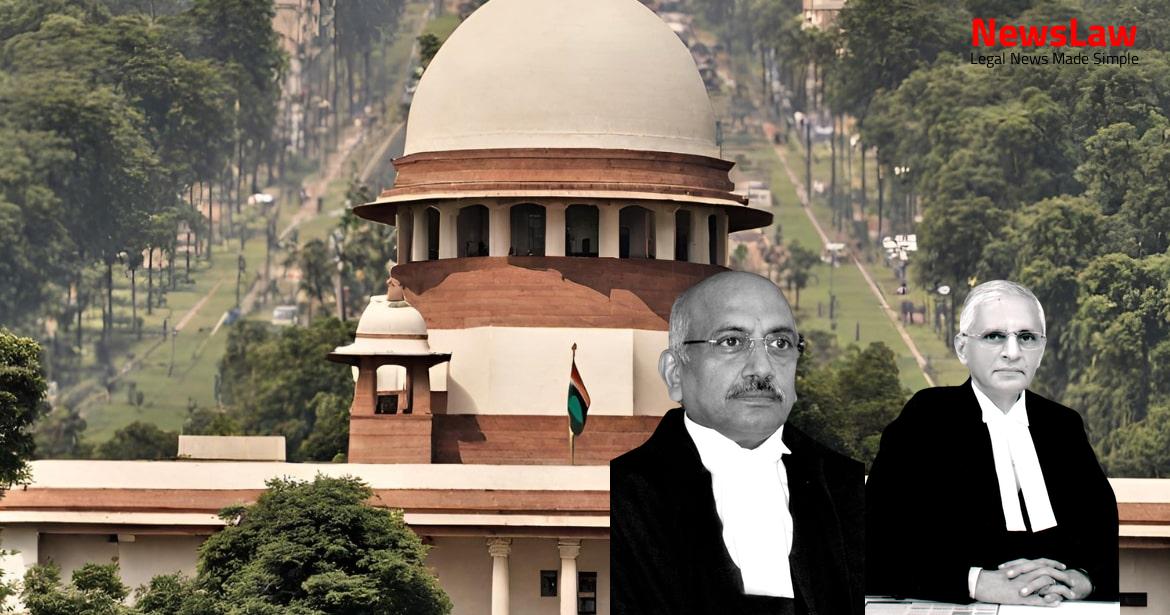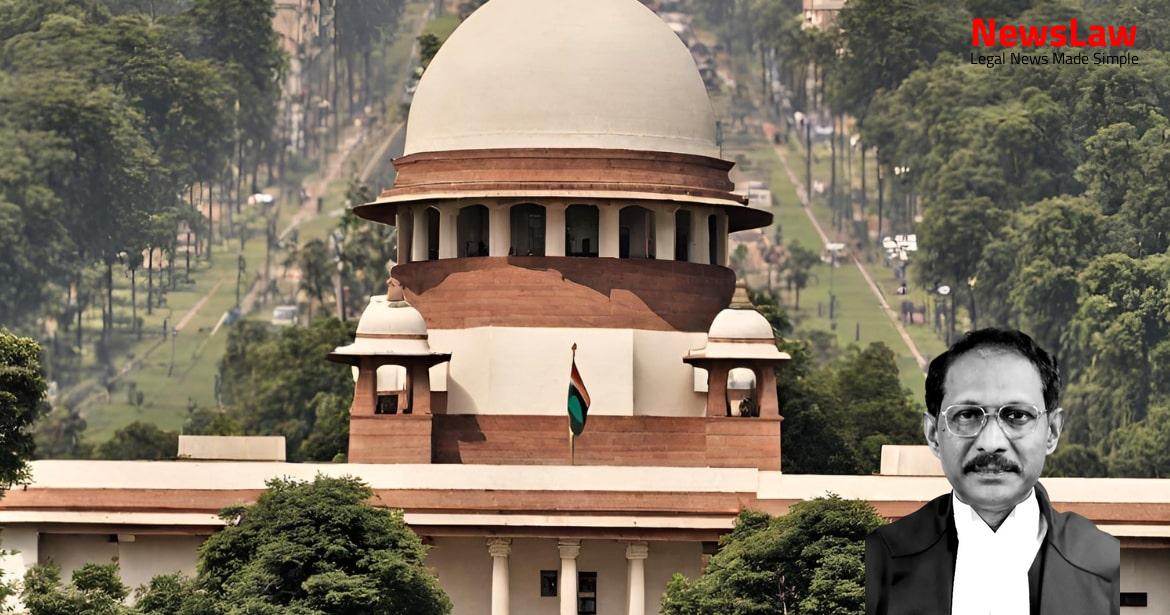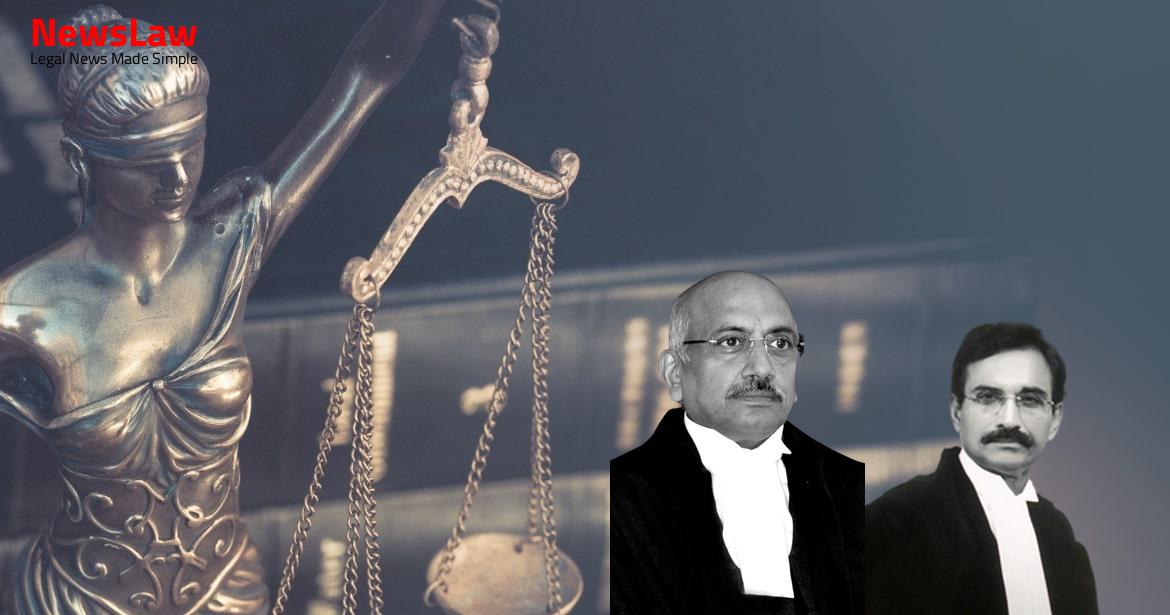Explore the nuanced realm of legal analysis within insurance claim disputes, where the interpretation of limitation periods and the weightage of surveyor reports play pivotal roles. This case summary delves into the critical assessment conducted by the court, shedding light on the intricate legal considerations that shape the outcome of such complex disputes.
Facts
- Two insurance policies were secured by respondent No.1 to cover the risk during specific periods.
- A fire incident on 06.11.1999 caused total destruction of the plant, machinery, and stock.
- Appointed surveyors assessed the loss at Rs.1,06,00,000/-, excluding business and other losses.
- NCDRC ordered the insurer to pay Rs.79,34,703/- with interest, partly in favor of respondent No.2 and No.3.
- Appellant (insurer) did not settle the claim nor repudiate it despite multiple communications.
- Respondent No.1 filed a complaint to NCDRC as a result of the unresolved claim.
- Loan advances by respondent No.2 and No.3 were secured by the building, machinery, and stock in trade of respondent No.1.
- Investigations by appointed surveyors and investigators were conducted to assess the loss.
- The NCDRC decision allowed part of the claim based on detailed consideration of the matter and the assessment reports.
Also Read: Interpretation of Will and Hindu Succession Act: Legal Analysis
Arguments
- Learned counsel for the appellant argued that the proceedings before the NCDRC were not sustainable as the claim was filed beyond the limitation period.
- The appellant’s counsel referred to Section 24A of the Consumer Protection Act, 1986, which sets a limitation of two years to file a complaint from the date of the cause of action.
- It was pointed out that the fire incident occurred on 06.11.1999, but the complaint was filed on 26.03.2003, which exceeded the permissible time limit.
- The appellant’s counsel also contended that the interest rate of 12% per annum was excessive in this case.
- The term ’cause of action’ is of wide import and can have different meanings in different contexts regarding limitation.
- Cause of action is defined as the reason for which a suit is brought and forms the foundation of the suit.
- The surveyor’s report can be considered as evidence until more reliable evidence is presented to contradict it.
- The NCDRC erred in relying solely on the surveyor report without giving weight to the investigation report.
- Section 64-UM(2) of the Act, 1938 stipulates that no claim over twenty thousand rupees in value can be settled without a report from an approved surveyor or loss assessor, unless directed by the Authority.
- Insurers have the right to pay or settle a claim at a different amount from that assessed by the approved surveyor or loss assessor.
Also Read: Legal Analysis of Pujaris’ Rights in Temple Land Ownership
Analysis
- The investigation report should be considered along with the surveyor’s report to reach a conclusion on stock loss.
- The date of intimation of investigator appointment and complaint filing date establish the complaint is within the time limit.
- The surveyor’s report is a crucial document with statutory recognition but can be challenged with contrary evidence.
- The NCDRC was justified in considering the complaint on its merits without needing a separate order on limitation.
- The surveyors examined stock details like purchases, sales, and visit to the source of procurement.
- The insurer’s delay in appointing an investigator does not diminish the relevance of the surveyor’s report.
- The investigation report holds significance when the surveyor’s report is not conclusive or when fraud is suspected.
- The surveyor’s report forms a foundation for claim settlement but is not binding on the insurer or insured.
- The rate of interest and loss assessment towards stock destruction are key considerations in the judgment.
- The timeline of events and actions by the insured, insurer, and surveyors play a crucial role in determining the validity of the claim.
- The NCDRC justified the delay in payment by awarding appropriate compensation to the respondent No.1.
- The rate of interest awarded should be commensurate to provide benefit for the delayed payment.
- The NCDRC’s decision to award interest at 12% per annum without specific reason was not justified.
- A normal bank rate or around 9% per annum would be more appropriate for granting interest in this case.
- The amount ordered by the NCDRC is now payable with interest at 9% per annum instead of 12% per annum.
- The order stands modified to reflect this change.
- The appeal admission and stay of the order required a deposit of 50% of the amount before the National Commission.
Also Read: Land Compensation Redetermination Case
Decision
- The appeal is allowed in part.
- Second and third respondents can withdraw their portion of the awarded amount in the ratio of 60:40 upon furnishing satisfactory security to the Commission.
- The appellant must deposit the balance amount within six weeks before the National Commission.
- Disbursement of the funds will be made in a ratio that fulfills the total awarded amount.
- Second and third respondents are permitted to withdraw their share of the amount.
- Pending applications, if any, will be considered disposed of.
Case Title: NATIONAL INSURANCE CO.LTD. Vs. M/S HARESHWAR ENTERPRISES (P) LTD. (2021 INSC 412)
Case Number: C.A. No.-007033-007033 / 2009



